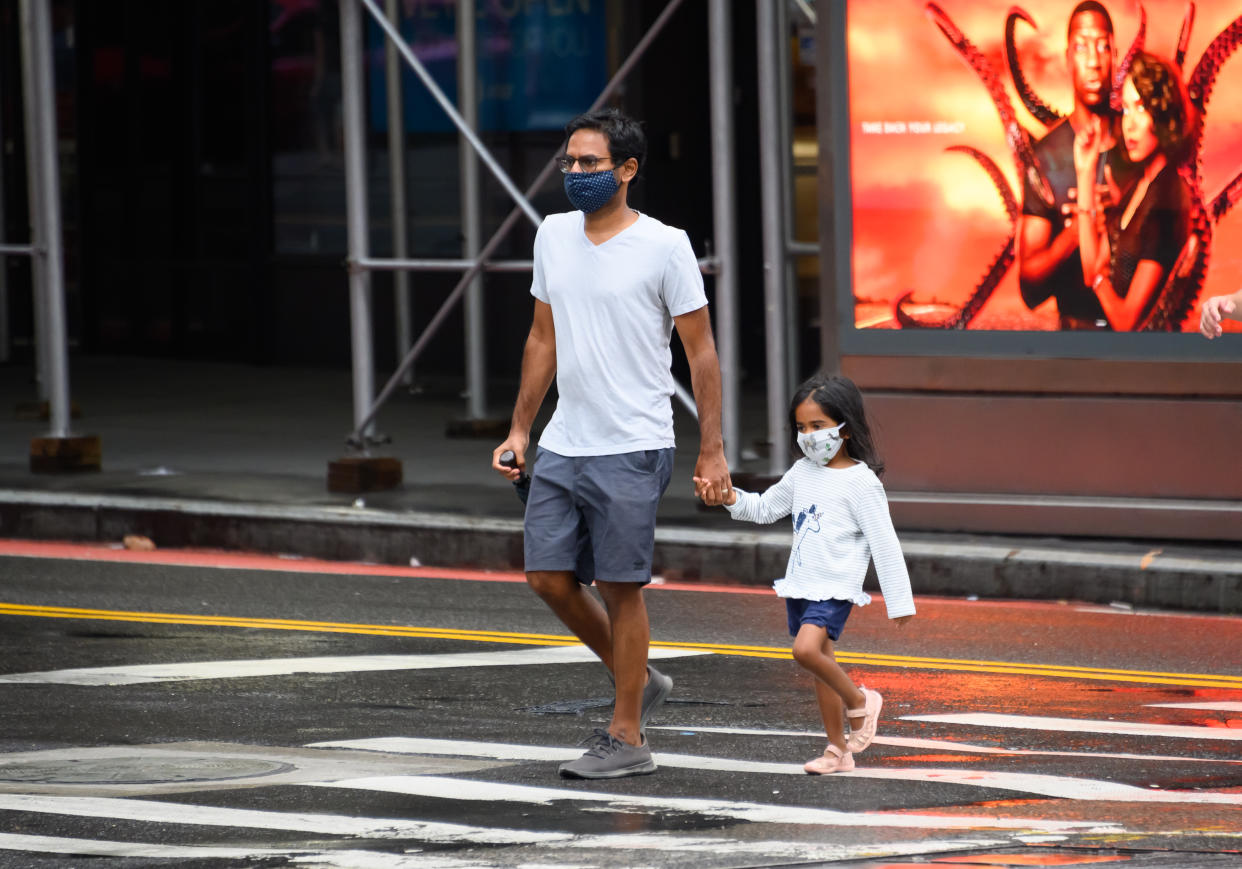New CDC guidance says COVID-19 rates in children are 'steadily increasing': Why schools may be 'a setup for disaster'

Cases of COVID-19 are “steadily increasing” in children, according to new guidance for health care workers released by the Centers for Disease Control and Prevention.
The guidance, which was updated on the CDC’s website on Friday, says that children now make up more than 7 percent of all confirmed COVID-19 cases in the U.S. At the same time, children make up about 22 percent of the U.S. population, the CDC notes. The number of cases has been “steadily increasing” from March to July, the guidance says.
However, the CDC warns that the actual number of children infected with SARS-CoV-2, the virus that causes COVID-19, could be higher. “The true incidence of SARS-CoV-2 infection in children is not known due to lack of widespread testing and the prioritization of testing for adults and those with severe illness,” the guidance says.
The CDC also said that children can spread the coronavirus “effectively in households and camp settings” and that school closures and “community mitigation efforts” in the spring and early summer “may explain the low incidence in children compared with adults.”
The updated guidance comes less than a week after a report from the American Academy of Pediatrics and the Children’s Hospital Association found that more than 97,000 American children tested positive for the coronavirus during the last two weeks in July — a 40 percent jump over the previous two-week period.
Increases in pediatric COVID-19 cases are notably happening in areas where school districts have reopened and aren’t implementing social distancing or mask mandates. In Georgia’s Cherokee County School District, roughly 2,000 students, teachers and staff are under quarantine after COVID-19 cases were reported. The district welcomed students back for in-person learning on Aug. 3, and shifted one of its schools — Etowah High School — to remote learning through Aug. 31, according to an announcement on the school’s website.
Georgia’s Department of Public Health shares data online on the number of confirmed virus cases by day but doesn’t have a daily breakdown by age. On Sunday, there were 1,873 new confirmed cases in the state, the agency revealed. But a graph of overall cases shows a significant number of confirmed cases in children from newborns to 17 years old during the course of the pandemic.
In Florida, where Gov. Ron DeSantis has pushed for schools to reopen, there have been 45,852 pediatric cases of the virus since March 1, according to the Florida Department of Health. And in Texas, it’s hard to tell. The state, which recorded 6,024 confirmed cases on Sunday, is not sharing a breakdown of ages online through the Texas Department of State Health Services, and it is not currently tracking COVID-19 cases in schools, according to the Dallas Morning News.
There are likely a few things behind this steady increase in COVID-19 cases in children, Dr. William Schaffner, an infectious disease specialist and professor at the Vanderbilt University School of Medicine, tells Yahoo Life. “For a long time, children were kept at home and very separate from other people,” he says. “Now that they’re out and about and families are going out in a carefree way, children are being exposed — they’re playing together, going into crowds with their parents, and now they’re starting to go to school.”
“The opportunities for exposure have substantially increased for children,” he adds.
There is also more testing happening in children right now, Dr. Rajeev Fernando, an infectious disease expert in Southampton, N.Y., tells Yahoo Life. “I don’t think that COVID-19 hasn’t been infecting kids in the past — it’s just that we weren’t testing kids before, and now we are testing,” he says.
It’s difficult to tell exactly what’s happening in areas where schools are open that also have large amounts of community spread of the virus, Dr. Amesh Adalja, senior scholar at the Johns Hopkins Center for Health Security, tells Yahoo Life. “Those children are just as likely to get COVID-19 in the community as they are in the schools,” he says. “It’s not surprising, though, that community spread does impact children as well.”
However, “it’s a setup for disaster” in schools where social distancing isn’t enforced, masks aren’t mandated and there is large community spread, Fernando says. “We need to open based on science and epidemiology — and you need the social distancing and the masks,” he says. “Without that, there can be pandemonium.”
Schaffner is concerned that some areas aren’t tracking COVID-19 cases in schools and cautions that things can get worse if that continues. “If you don’t look, you won’t find, you won’t know, and the virus will spread unbeknownst,” he says. “You will kid yourself into thinking there isn’t much going on out there. We’ve been there. The virus will just run rampant.”
For the latest coronavirus news and updates, follow along at https://news.yahoo.com/coronavirus. According to experts, people over 60 and those who are immunocompromised continue to be the most at risk. If you have questions, please reference the CDC’s and WHO’s resource guides.
How to maintain your physical and mental health during the pandemic
Taking care of a loved one with COVID-19? Here’s how to stay healthy
Q&A with Dr. Kavita Patel: How to keep your family safe and maintain your mental health
Read more from Yahoo Life
Want daily lifestyle and wellness news delivered to your inbox? Sign up here for Yahoo Life’s newsletter.

